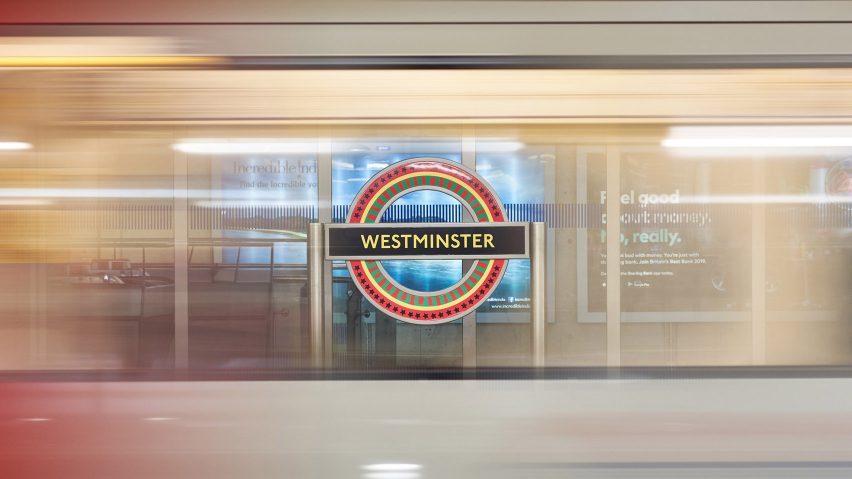
Larry Achiampong overhauls London's tube roundel with pan-African designs
British-Ghanaian artist Larry Achiampong has replaced the well-known blue, red and white design of London Underground's roundel with colours and patterns from the pan-African flag.
Achiampong has reimagined the famous tri-coloured tube signage symbol for Westminster's Underground station to spotlight those who have been "erased from history".
The design was a public commission for Transport for London's (TfL) Art on the Underground program.
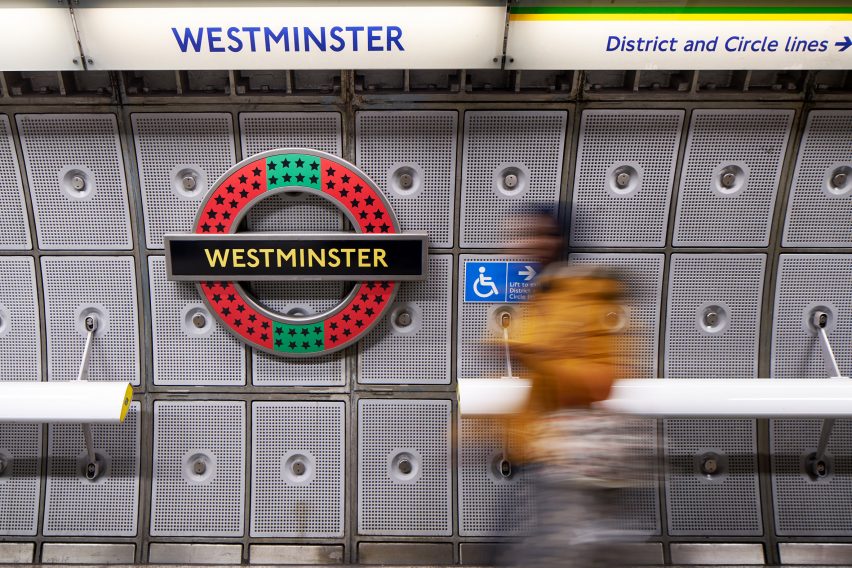
The eight new roundels were designed to represent various African "diasporic" identities – people who were once part of a community that has since dispersed.
They each feature pan-African shades of red, black and green to reflect the land, the people, and "the struggles the continent has endured", while yellow is used to represent "a new day and prosperity".
The new roundels have been installed in 70 sites throughout Westminster Underground station, where they will be on view until February 2020.

The roundels are a continuation of Achiampong's Relic Traveller project, which looked at ideas regarding "lost testimony, fallen Empire and displacement", and considered the notion of alternate histories.
The first part of this project saw Achiampong design a flag for The Relic Travellers' Alliance – a conceptual initiative set up for pan-African unionists of the future, who work to uncover lost diasporic histories from people who have been oppressed.
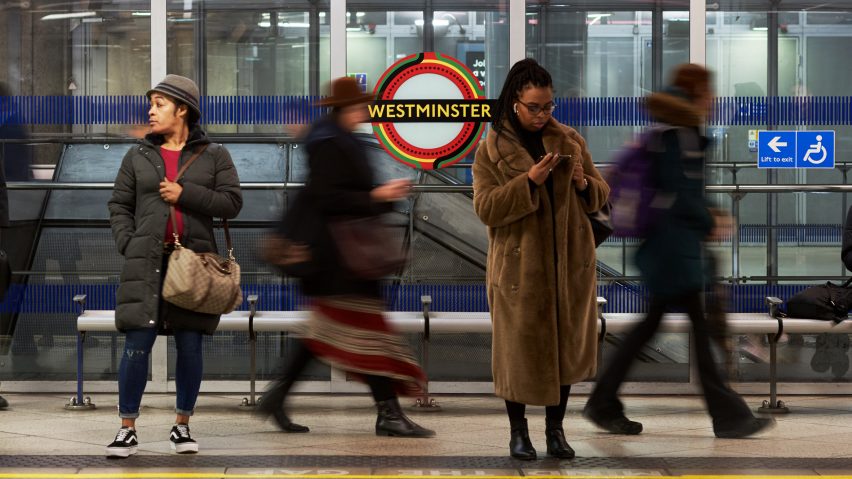
This conceptual "utopian" world would see the African Union attempt to "govern a future that avoids calamity, but at the same time does this from a bottom-up perspective, rather than a top-down one".
"By listening to the stories of regular people, this starts a process, not only of healing, but also of recognising people whose identities and stories have been erased from history or not even noticed whatsoever," Achiampong told Dezeen.
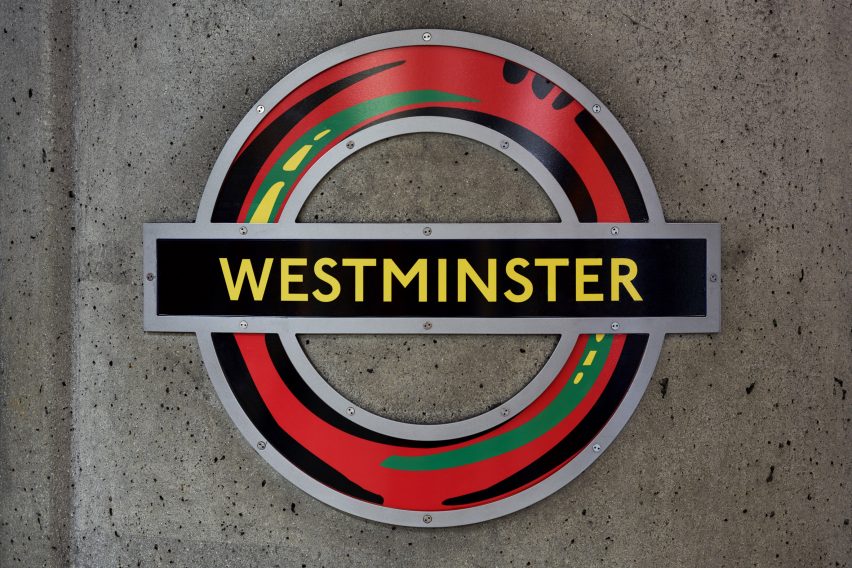
The Relic Travellers' Alliance flag was hoisted up in the courtyard of London's Somerset House in 2017 as an "Afrofuturistic icon", and featured 54 stars to represent the 54 countries of Africa.
"I thought it would be amazing to create and place this pan-African flag upon a skyline that, essentially, is full of nothing but colonial flags," explained the artist.
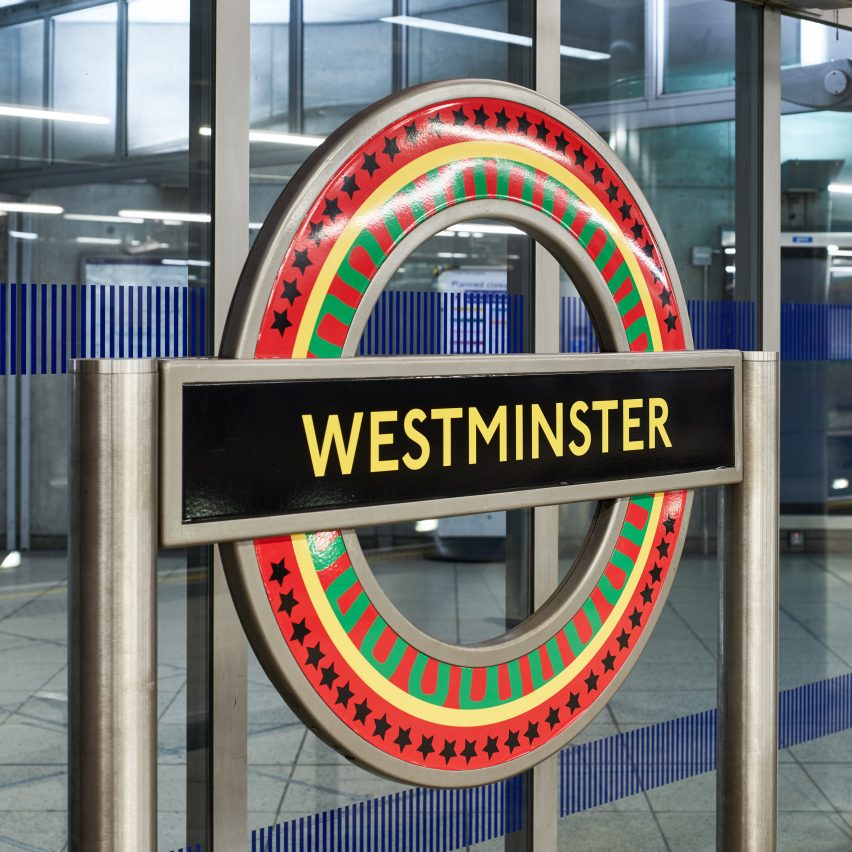
As Achiampong explained, elements of the flag's design were essentially deconstructed and used to create the eight different roundels.
"When Kiera Blakey at Art on the Underground approached me about redesigning the roundel, it felt like another chance to work with iconography that is not only nationally, but also internationally recognised," he said.
"I could continue to further disrupt, or galvanise, that conversation that just doesn't get given the space to open up, with regards to celebrating histories and people who, again, continue to be erased, forgotten, or not even recognised," he added.
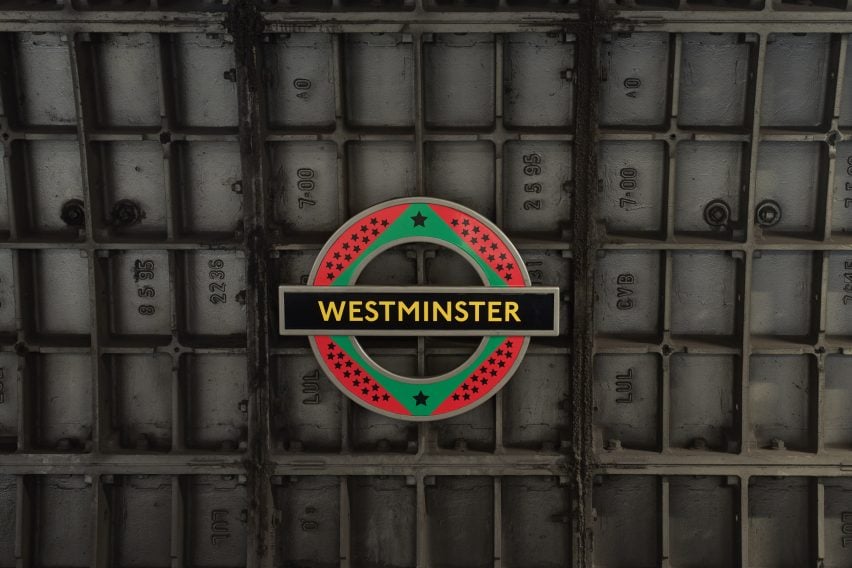
Achiampong's redesigns are also based in science fiction, and take cues from traditional African Adinkra symbolism.
They build on his concept of "sanko-time", named after the Ashanti word "sanfoka" that, roughly translated, means to go back for what has been left behind.
According to the artist, "sankofa" also alludes to using the past to prepare for the future – "the wish of being able to go back to an immutable point to make sure that what has been lost is not lost any longer".

Last year we looked at 10 architects and designers that use their work to champion the afrofuturism movement.
This included Kenyan photographer Osborne Macharia, who produced a series of images for the Black Panther film, as well as artist Cyrus Kabiru who creates new objects from junk found on the streets of Nairobi.
Photography is by GG Archard.